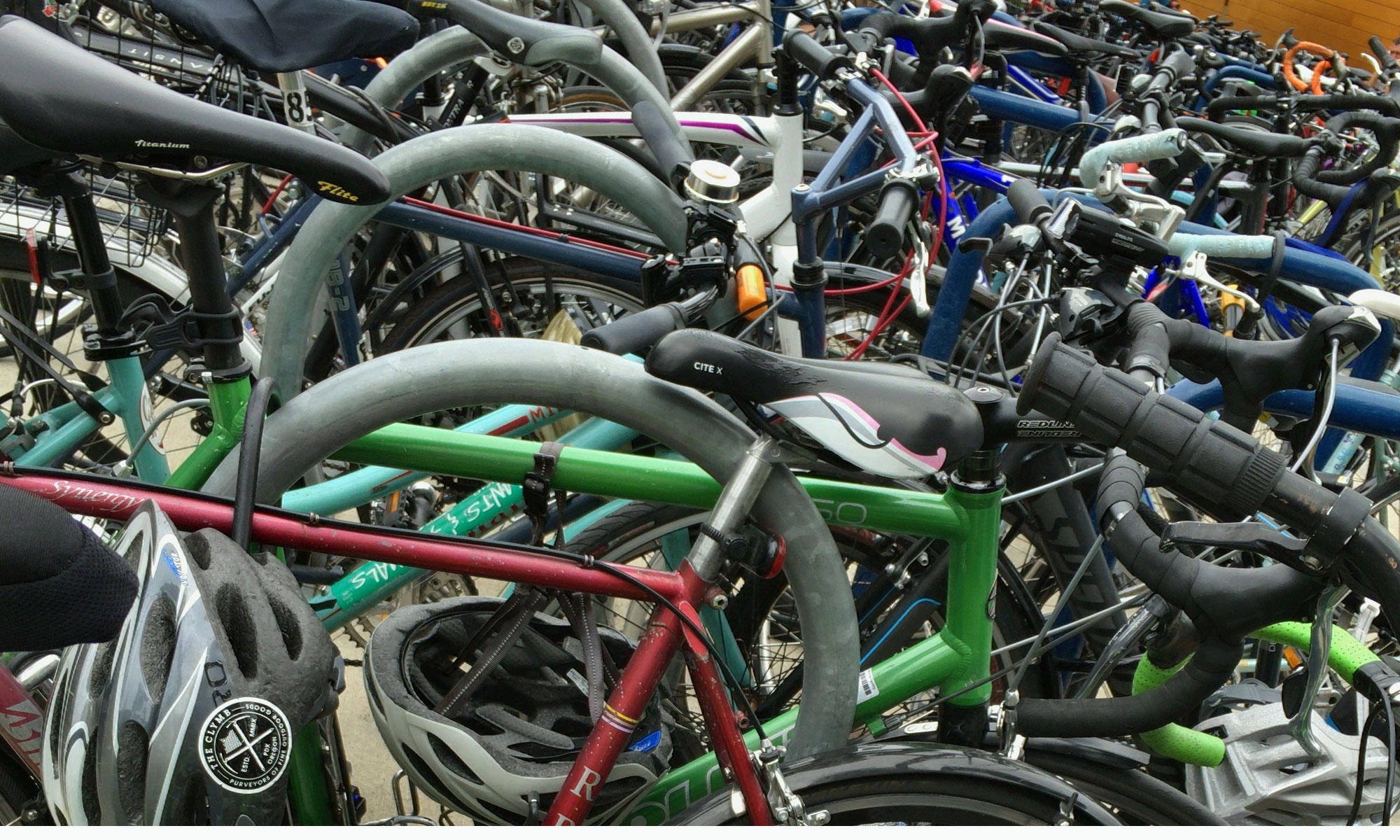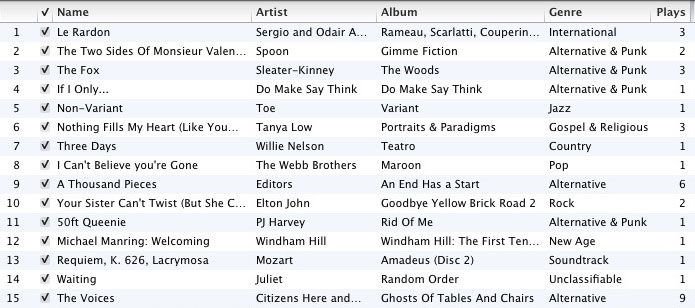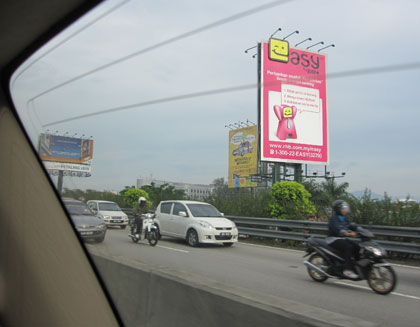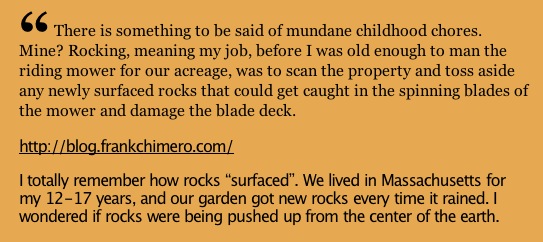 My “cutting floor” blog is over at tumblr. And you can change the colors of the blog (upper right corner).
My “cutting floor” blog is over at tumblr. And you can change the colors of the blog (upper right corner).
15 random
So Eddie tagged me. I took the challenge.
1) Turn on your MP3 player or music player on your computer.
2) Go to SHUFFLE songs mode.
3) Write down the first 15 songs that come up–song title and artist–NO editing/cheating, please.
I did cheat – I didn’t actually listen to the songs, as I was trying to get other stuff done that required thought-without-music while my jukebox was playing. But you still get a glimpse into my iTunes library.
And I pass on the challenge to you.
You’ve got to let them go
 Our oldest son, Jay, is 17. He will be gone from our home not long from now. Hard to imagine – but it’s something many of my friends and their kids have already been through, so I know it’s do-able.
Our oldest son, Jay, is 17. He will be gone from our home not long from now. Hard to imagine – but it’s something many of my friends and their kids have already been through, so I know it’s do-able.
Anyhow, my little point for today’s lesson* is that you have to let your kids try things that other parents may consider risky. (That’s Jay up there in that crevice of the rock.) Heather struggles a bit more with what others think than I do. (We’re a good balance for each other!) But she is sometimes more willing to let the little birds leave the nest than I.
Parenting always involves stretching boundaries, on the part of both parents and kids. Let’s be willing to let the other try things and sometimes fail.
* And I’m preaching to myself on this one too. You know that by now.
Language is important
But I’m reminding you. Visiting another country, where your language is not the primary language, is a good way to remember that language is important.
In Malaysia, Bahasa Malay is the main language. English is very common, but Bahasa is the preferred way of communicating.
“Easy” is a campaign or product for one of the banks there. I had to ask a local what the billboard (and storefronts) were advertising. The non-verbal cues were not enough for me to figure it out. (Apparently, it’s a form of quick banking.)
Interestingly, in Kuala Lumpur, some advertising is in English, and some is in Bahasa. I guess it depends on the target audience.
Unending growth
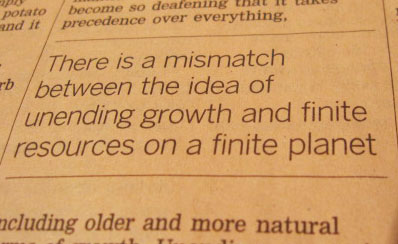 If you think back to the economic bubble, it was largely based on this idea that economic growth should continue at a double-digit pace forever.
If you think back to the economic bubble, it was largely based on this idea that economic growth should continue at a double-digit pace forever.
Harry Eyres wrote a column in The Financial Times (England’s uniquely orange newspaper) that had this callout.
I completely agree. Let’s get real.
Loss of innocence
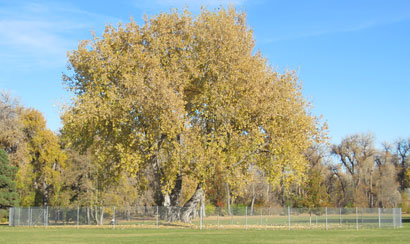 This beautiful tree is in a park not far from the oldest part of my town. It’s probably as old as the oldest buildings.
This beautiful tree is in a park not far from the oldest part of my town. It’s probably as old as the oldest buildings.
What a great tree to climb!
Alas, such is not to be. Notice the fence surrounding the base? My guess as to why – liability issues. The city can’t be bothered with the cost of a lawsuit from some parent whose kid climbs the tree, falls down, breaks his leg and sues.
I miss the old days, when you could turn around without having to consider legal implications.
The car to rule them all
The Perodua Myvi is the most popular car in Malaysia. It seems that every third car is a Myvi. And for good reason – a 2009 study by J.D. Power & Associates saw the MyVi ranked highest for its initial quality in terms of new-vehicle ownership in the compact car segment. (Thanks for that fact, Wikipedia.)
Not fast. Not big. But I like it. I want one. Great fuel economy, easy to park and very versatile. (Fold the rear seats down and you can haul a lot of stuff).
It’s a rebadged Daihatsu Sirion, but assembled in Malaysia. This “supermini” segment of cars (as they call them in the UK) is largely absent from the American market. The new Ford Fiesta is starting to change that, hopefully. And the wonderful Honda Fit (Jazz in the rest of the world) is an excellent member of this class.
Cool Asian cars
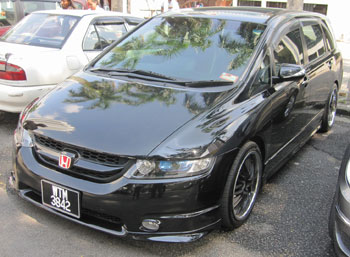
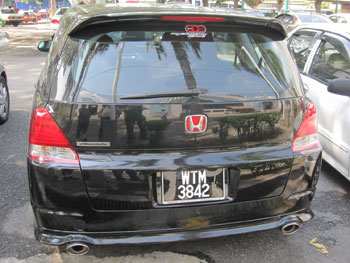
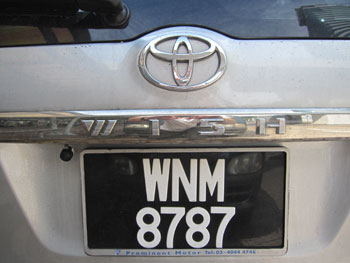 I saw some really cool cars in Kuala Lumpur.
I saw some really cool cars in Kuala Lumpur.
This Honda Odyssey (different model than in America*) is about 5 years old. Very cool. It’s a tiny bit taller than an Accord and yet has 3 rows of seats.
Toyota Wish is a similar model. Slightly taller and way less cool.
* Wikipedia has some good info on this model. Be sure to scroll down the page till you hit “JDM “.
Ads everywhere
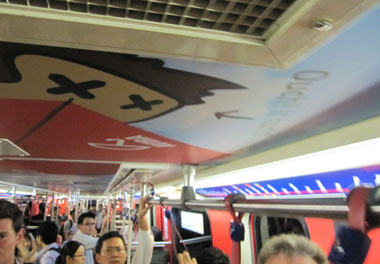 As we rode light rail trains around Kuala Lumpur, I noticed that ads were on the ceilings of the train cars. It seemed that companies rent ad space on entire trains. The outsides and insides of a train are completely wrapped in advertising for one company. Sometimes ads even cover parts of windows.
As we rode light rail trains around Kuala Lumpur, I noticed that ads were on the ceilings of the train cars. It seemed that companies rent ad space on entire trains. The outsides and insides of a train are completely wrapped in advertising for one company. Sometimes ads even cover parts of windows.
In this case, the company had something to do with preventing computer viruses.
I briefly raise these questions: How much advertising is too much? What if these ads help the train fare to be lower? And are the ads even effective? (I will answer that one – I’d guess that train users see them once and then the ads become invisible.)
